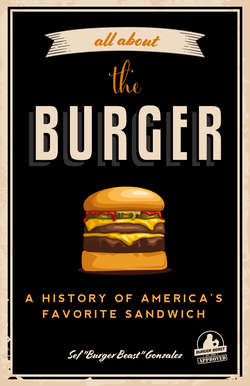Читать книгу All about the Burger - Sef Gonzalez - Страница 25
ОглавлениеNo, this chapter isn’t about a particular show, but about some of the types of eating establishments that helped popularize the majestic burger.
Diners
Diners are usually smallish restaurants with laid-back atmospheres, serving what can be best described as comfort food. Diners should have counter seating and booths where you can enjoy some music via tabletop jukeboxes while you wait for your food. I just described my ideal version of one, but yours might differ slightly. Typically, there’s only one or two short-order cooks who handle all the cooking, an impressive thing to see up close. All good diners are open twenty-four-hours or at least into the wee hours of the night. I lump coffee shops into the same group as diners.
Many folks believe that the original diners were the lunch wagons of the late 1800s. Eventually, as the need for more seating arose, lunch wagons switched to prefabricated buildings. It wasn’t until the 1960s and the advent of highways crisscrossing the United States that diners took off nationwide. Before this, most diners were found in small towns and urban areas.
Drive-Ins
The drive-ins I’m referring to weren’t the theater kind. At a drive-in restaurant, you would park your car and a member of their staff would come out to meet you at your vehicle, take your order, and then return with your food. Depending on the efficiency of the spot, you might have a quick meal or a drawn-out affair. Drive-ins rose to prominence as car culture took over America during the 1950s and 1960s; as folks got more comfortable using their cars for traveling from point A to point B, their “wheels” also started to become an extension of who they were.
Drive-ins are commonly associated with women skating around from hot rod to jalopy in the parking lot, but most, if not all, of the original carhops were guys or “tray boys.” It wasn’t until after World War II that women replaced men, after American males were called up to join the military. While it’s true that having a pretty girl serve you food increased sales, in the long run it created problems with fellas loitering.
McDonald’s found a way to streamline food service and cut out the problems with drive-in service. Once that new system spread to restaurants nationwide, the popularity of drive-ins began to wane. But it was the even more popular drive-thru service that would deal a major blow to drive-ins.
I wasn’t around to experience the original drive-in. My first taste of it was watching Happy Days on TV. I dreamed of eating and hanging out at the Arnold’s Drive-In featured on the program.
Believe it or not, there are actually a few hundred drive-ins still around where you can have your in-car eating experience. To find a list of all active drive-in restaurants with carhops, go to my blog, Burger Beast.
Luncheonettes
Lunch counters or luncheonettes were initially just that, a counter where you could sit down on a stool to enjoy lunch. Waitresses would tend to the customers while a cook prepared the dish. Lunch counters were popularized inside five-and-dime stores, which had a twofold reason for being there. Hungry customers could stop and grab something to eat, and someone who had just dropped in for a bite might end up in the store buying something.
The menu kept it simple with things that could be cooked on a flat-top grill, like hamburgers, sandwiches, soups, and desserts. Breakfast was a favorite at most lunch counters. Specials like meatloaf or hot turkey could be found daily.
Lunch counters were hurt immensely by fast food fever in the United States. Unlike drive-ins, which have been able to carve out a living in smaller towns, lunch counters and luncheonettes have pretty much been wiped from existence.
Diners, Drive-Ins, and Lunch Counters
A&W
Year Founded: 1919
City Founded: Lodi, California
Founders: Roy W. Allen & Frank Wright
Number of Locations at the Chain’s Peak: over 2,300
Slogan: “All American Food”
Roy W. Allen opened a small walk-up root beer stand in Lodi, California, on June 20, 1919. That night there was a party to celebrate the return of local World War I soldiers.
This was all happening the same year the Volstead Act was enacted. The prohibition of alcohol caused many to look for an alternative. Allen played on the phrase “root beer” to lure folks looking to get their alcoholic fill, even though root beer was no alcoholic beverage. The success of the first stand led to the opening of a second one in Stockton, California, in the summer of 1920. Allen then partnered with his former employee Frank Wright. They leased the Lodi and Stockton locations and focused on an expansion into Sacramento, a much larger city.
